How to Stay Safe While Photographing the War in Ukraine
![]()
With at least 32 journalists having been killed in Russia’s ongoing war on Ukraine, veteran photojournalist Timothy Fadek is sharing practical advice for other photographers on how to stay safe while covering the conflict.
Dangers to Aspiring Photographers
The Armed Forces of Ukraine have issued more than 2,000 accreditations to foreign journalists.
“For a young photographer, a conflict less than 2,000 kilometers (~1,200 miles) from home is still a professional opportunity,” explains Wilfrid Estève, associate director of the Hans Lucas photo agency in France.
“Today, it is the conflict in Ukraine that attracts hundreds of young journalists and novice photographers eager to document this war and start a professional career,” writes Le Monde (translated from French). “A colossal number, which adds up employees of most of the major European newsrooms, reporters from all over the world, and this myriad of freelancers looking for work.”
Since the start of the Russian offensive in Ukraine, Reporters Without Borders (RSF) has documented attacks directly targeting journalists wearing a “Press” armband and has seen more and more of them killed or injured in the course of their work.
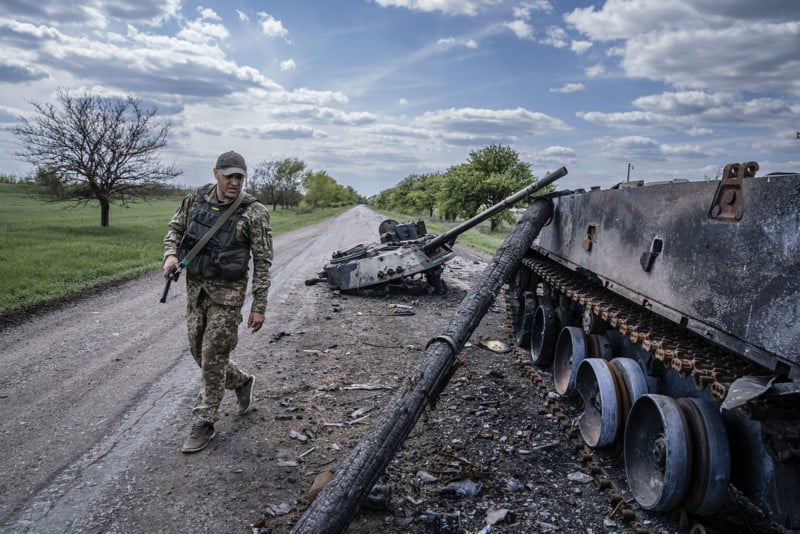
“I’d seen so many in Ukraine, in Kyiv without helmet and vest,” Fadek tells PetaPixel. “I saw journalists running around [without personal protective equipment, or PPE] in Irpin, which is a suburb of Kyiv, and Babyn (Babi) Yar, a former holocaust site that was attacked in the initial days of the war.
“I mean, anybody who thinks they can end up working in a hot country like Ukraine without the basic helmet-vest is just being foolish.”
Fadek, who has covered seven wars and civil uprisings in Kosovo, Israel-Palestine, Iraq, Haiti, Israel-Lebanon, Venezuela, and the Arab Spring situations, helped us understand how photojournalists (especially less experienced ones) can try to achieve a certain level of safety under the present working conditions.
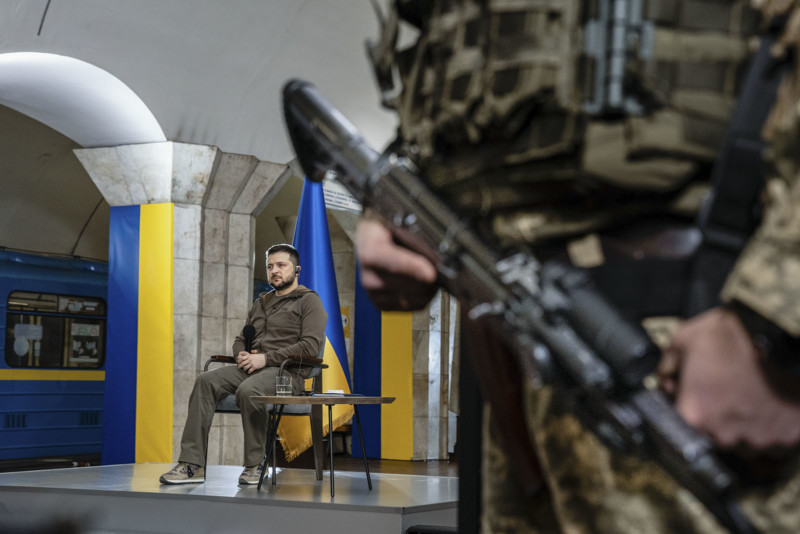
Editor’s note: PetaPixel does not guarantee the accuracy of any information or the quality of equipment/service provided by any of the vendors mentioned. Kindly do your own due diligence, especially when planning to photograph in dangerous environments.
Bulletproof Vest
“You need to have full protection,” cautions Fadek. “You need to have a Kevlar vest and Kevlar helmet. And you need to have ceramic or steel plates, and that’s because of the nature of this war.
“It is not a shooting war; it is an artillery war. It is not a tank battle war; it is definitely artillery and largely directed toward the civilian population. And with that comes randomness of the attacks, so you do not know where the attack is coming from.
“You can’t control when it’s going to happen. So, from the minute you walk out of your hotel door, you must be fully dressed in this PPE.”
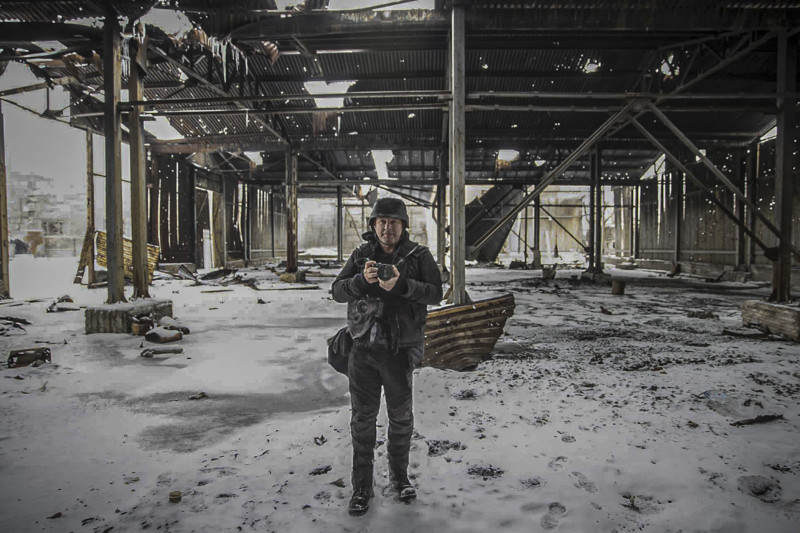
Ideally, you should equip yourself with a vest before you leave the US or your home country, but if you are certain of a source in Poland or a neighboring country that you will be traveling through, it is okay to pick one up on the way.
“I prefer I have one, so I have my kit and bring it with me all the time,” says Fadek. “I know plenty of journalists who were able to secure loaners from organizations but I don’t have details about who these organizations are.”
There are many online outlets, including BulletProofMe, which sell PPE, informs Fadek, who does not remember where he got his own vest as it was acquired so long ago.
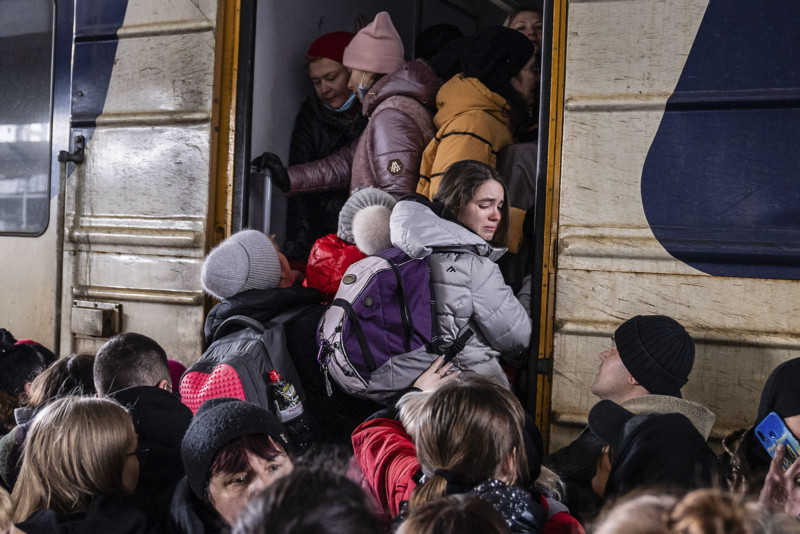
“It’s legal, completely legal, except some states including New York state which just recently passed a law prohibiting civilians including journalists from purchasing this stuff and having it delivered to New York state,” cautions Fadek. “It’s a law passed by the NY state legislature only a few weeks ago.”
Kevlar, a DuPont synthetic fiber with a molecular structure of many inter-chain bonds that is incredibly dense and strong, is the base material that is bullet resistant. It provides a tensile strength 10X greater than steel on an equal weight basis, according to manufacturer DuPont. The use of Kevlar was integrated into vests in the mid-1970s, and a fully developed vest was produced in 1976 after the discovery of Kevlar by Stephanie Kwolek in 1971.
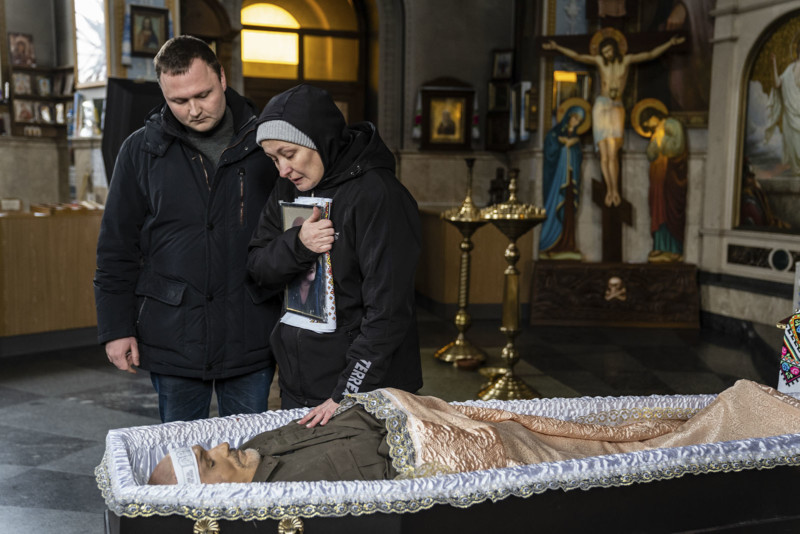
Just Kevlar is not enough in a war zone, and plates must be inserted in the front (chest) and back areas. There are lighter-weight ceramic plates and heavier steel plates. The disadvantage of ceramic plates is that they can crack when hit by a projectile and therefore do not offer as much protection and reuse as steel plates.
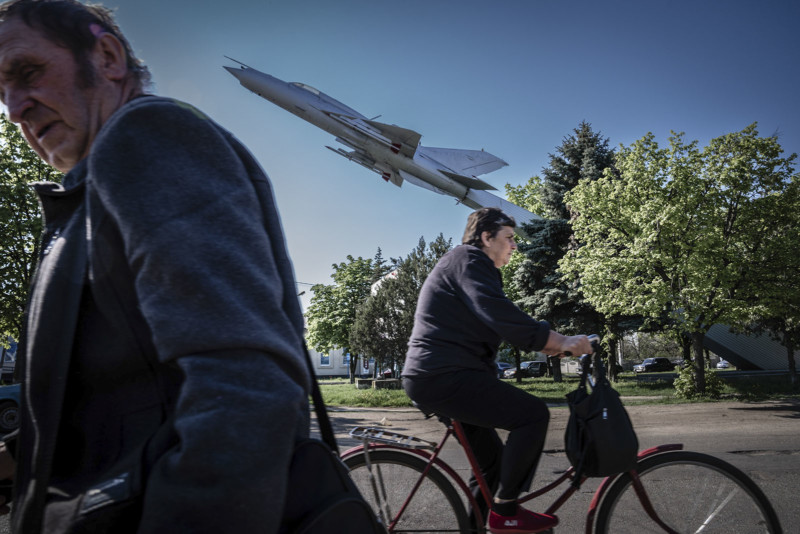
“I’m probably carrying approximately 40 pounds of gear (including a vest of around 10 pounds and a helmet),” says Fadek. “I don’t think you need to be an athlete, but you need to be able to work 16-hour days under a lot of pressure.”
Helmet (and Wearing it Correctly)
“The helmet is Kevlar that is sandwiched in between metal,” explains Fadek. “So, it’s steel on the inside and the outside, but then there’s a Kevlar kind of in the middle… it’s quite heavy.
“I believe they are called level three ballistic, while the Kevlar plate combination is ballistic level four.”
War photographer Chris Hondros was fatally wounded in a mortar attack by government forces in the besieged city of Misrata, Libya, while covering the 2011 Libyan civil war. Photojournalist Tim Hetherington was also killed in the attack, which wounded two other photographers. Photojournalist Guy Martin said that the group was traveling with rebel fighters. According to The New York Times, Hondros died from his injuries as a result of severe brain trauma.
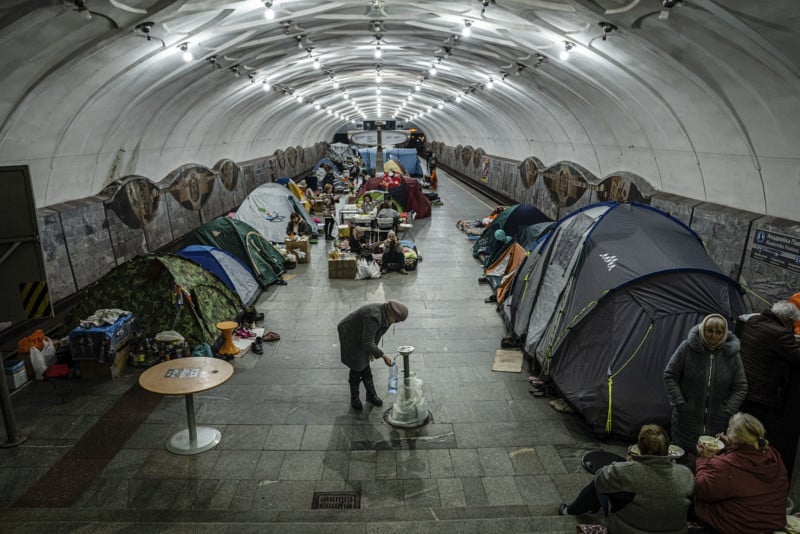
Photojournalist Nicole Tung who spent a long while in the Intensive Care Unit alone with Hondros, holding his hand and listening to the beeping of the ventilator said, “He was wearing a helmet and a vest at the time it happened, but even that couldn’t help the injury he sustained, and he lost a lot of brain tissue on the way to the hospital.”
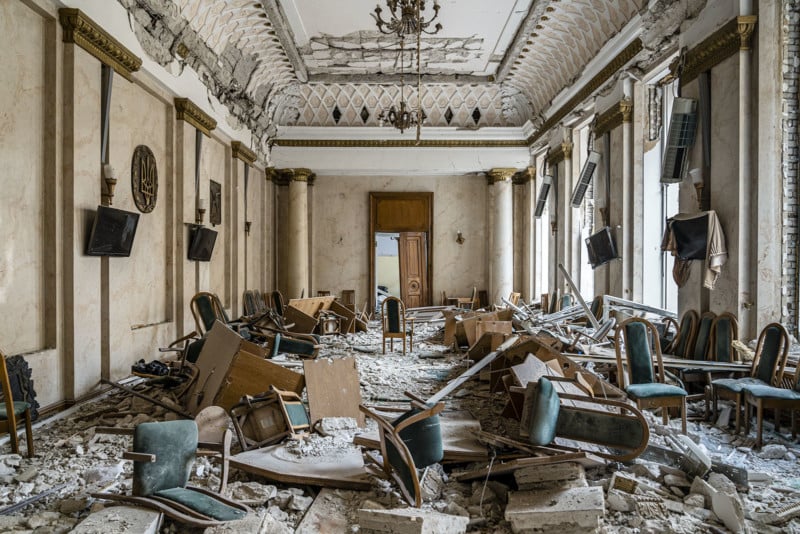
Hondros was a close friend of Fadek, and when he saw young photojournalists running around in Ukraine without helmets and vests, it would make him very angry and sad at the same time.
“Wear your helmet to cover your forehead,” advises Fadek. “If you are hit with shrapnel from an exploding artillery shell, and it hits your face, you may survive. You will not survive if it hits you in the forehead.
“Again, this specific sentiment comes from thinking about Chris Hondros on his birthday [March 14] because the way he was killed in Misrata in Libya was that shrapnel from an exploding either artillery or mortar shell hit him in the forehead. I am not saying that he was wearing his helmet incorrectly, but it was just a reminder to everyone out there.
“I’ve seen many people wear helmets incorrectly. They wear them all the way back, covering their neck, and it’s completely useless unless it covers your forehead.
“When you’re walking around and if you raise your camera to your eye, the helmet will naturally start to slip away from your forehead, and I have to personally remind myself to constantly move the helmet back down in front of my forehead.
“The top part of the camera will nudge the helmet up, exposing your forehead, so it was just a small thing that I wanted to include. Once you have all the gear, make sure you’re wearing it correctly.”
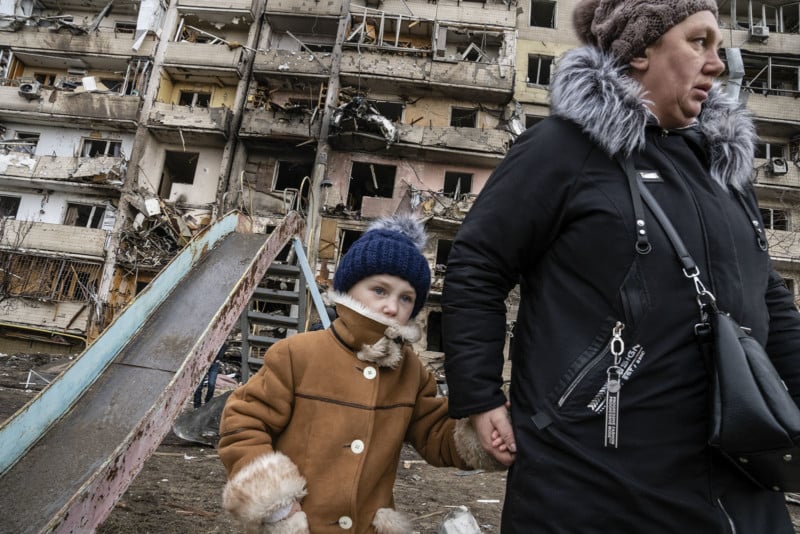
Evacuation Insurance
“You need to have some backing from a publication or a client that will not just pay your fee and expenses but also cover your evacuation insurance,” says Fadek. “Or if that is not happening, then you must as an independent photojournalist have some kind of evacuation insurance [that you purchase yourself].”
No matter where you are in Ukraine, even though the hospitals can be pretty good, they are overburdened, and if you’re injured, they’re not going to prioritize you and put you at the front of the line. You need to be evacuated to Poland or Germany or back to wherever your home country is.
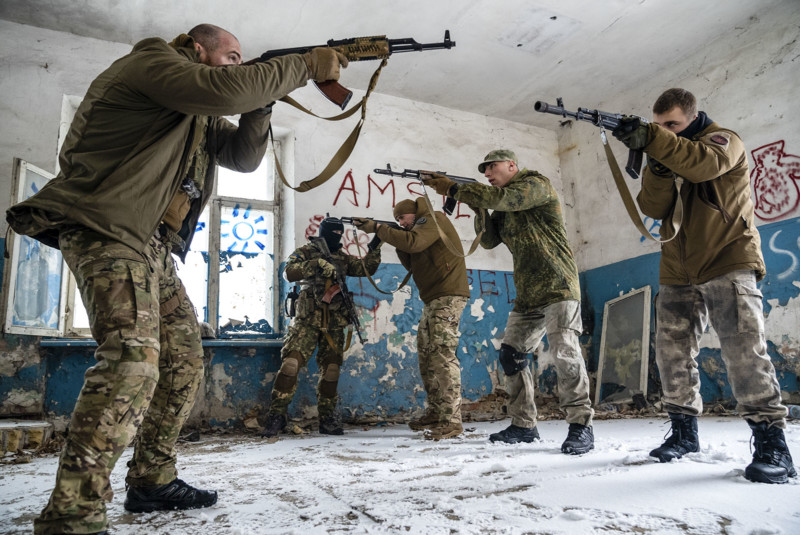
“The insurance company I had was called Global Underwriters [based in Cincinnati, Ohio],” says Fadek.
Another company that provides insurance for evacuation in a war zone is Lloyd’s of London, generally known simply as Lloyd’s. These insurances would organize an evacuation out of Ukraine to a nearby European hospital or even your home country depending upon the policy.
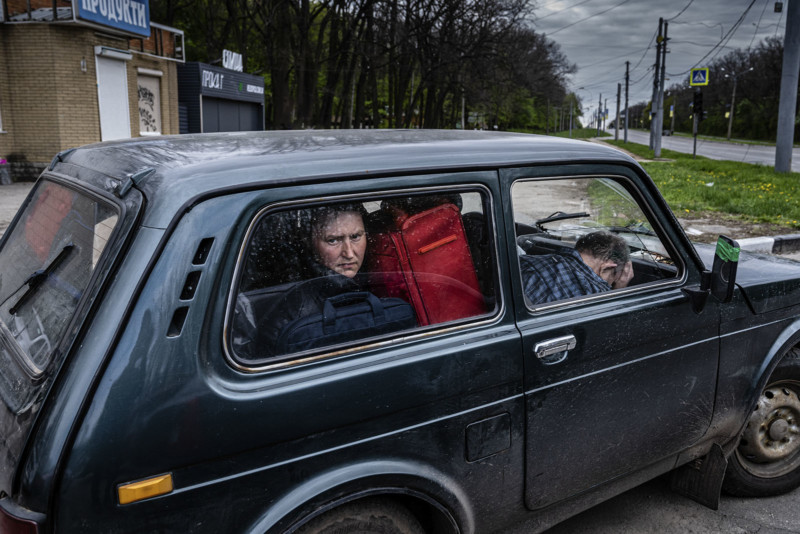
“I think the charge was something close to $900/month,” says Fadek as he checks his email. “I think it might have gone up recently because they realized the increased risk from when they issued the policy to me. I think the risk against journalists was not fully appreciated, and at some point, they increased it to more than double. It’s probably over $2,000 per month now.”
Hostile Environment First Aid Training (HEFAT)
“With the heightened risk of personal injury and to your colleagues, you need to have some first aid training,” says Fadek. “It would be foolish to go into such a deadly situation without knowing how to wrap a tourniquet or stop bleeding.”
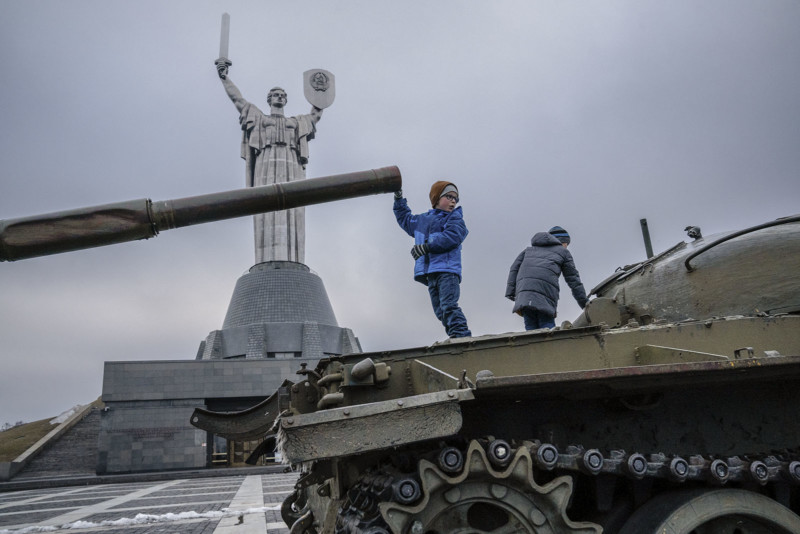
There’s a full hostile environment first aid training (in person and not online) called HEFAT. This is a certificate you can get, which is not entirely necessary, but many news organizations are demanding that their staff journalists undergo it these days. It’s a four or five-day class, and they will not send you out until you have completed this course.
The courses are often led by former soldiers and military, paramedics, and people who started not working in journalism but migrated to working with journalists and NGO professionals.
Even though it’s costly, various organizations, for example, the Rory Peck Trust, give out bursaries to cover the cost of these pieces of training. To qualify, you must have worked as a freelancer in newsgathering and current affairs for a minimum of 18 months. The number of bursaries is limited, and priority is given to freelancers whose work frequently takes them into hostile environments and to those with a confirmed assignment.
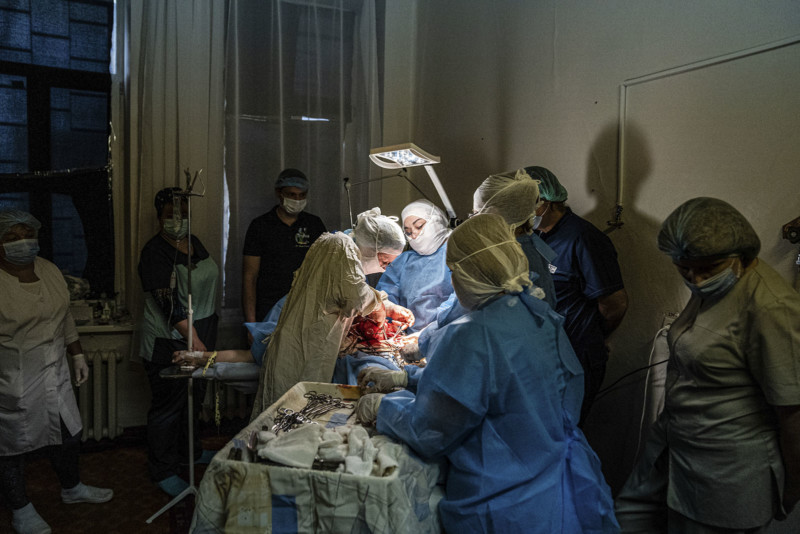
GJS provides Hostile Environment and First Aid Training (HEFAT) for journalists operating in moderate and high-risk environments. Their HEFAT courses range from 2-day refresher courses to comprehensive 5-day courses (up to $2,995) focusing on advanced medical training and kidnapping and detention.

Previous War Experience
“Obviously, having some kind of previous war experience would be ideal because this is a completely heightened level of warfare,” says the photojournalist. “This is not Arab Spring [a series of pro-democracy uprisings that enveloped several predominantly Muslim countries, including Tunisia, Morocco, Syria, Libya, Egypt, and Bahrain]. This is two fully mechanized armies throwing 500lb artillery shells at each other.
“At the beginning of the war, when it was not an artillery war on Kyiv, it was a shooting war. There were Russian snipers and tanks, and the unpredictability and speed of the initial Russian advance made things very chaotic.”
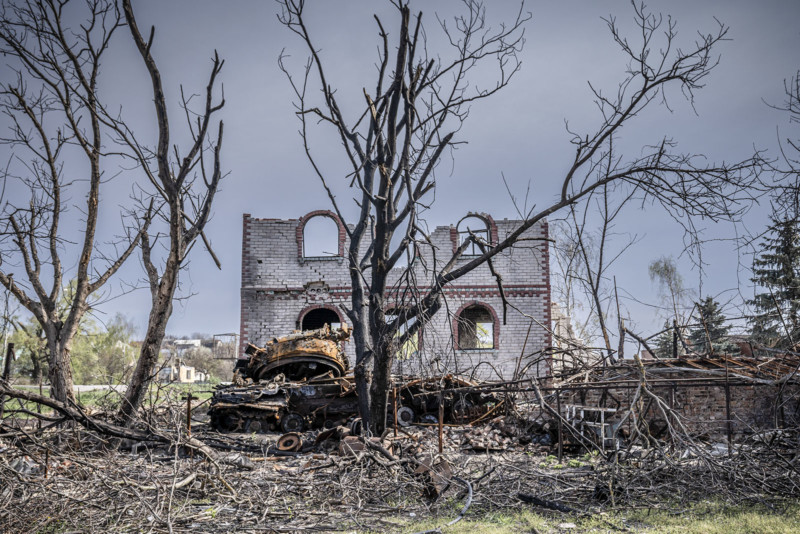
Communicating to Know the Frontline
Fadek feels that you need to have a really well-established communication network with your fixers, colleagues, and people in the Ukrainian government. You need to know on a daily basis where the front line is moving and where you are in relation to the front line. Having multiple points of communication is extremely important.
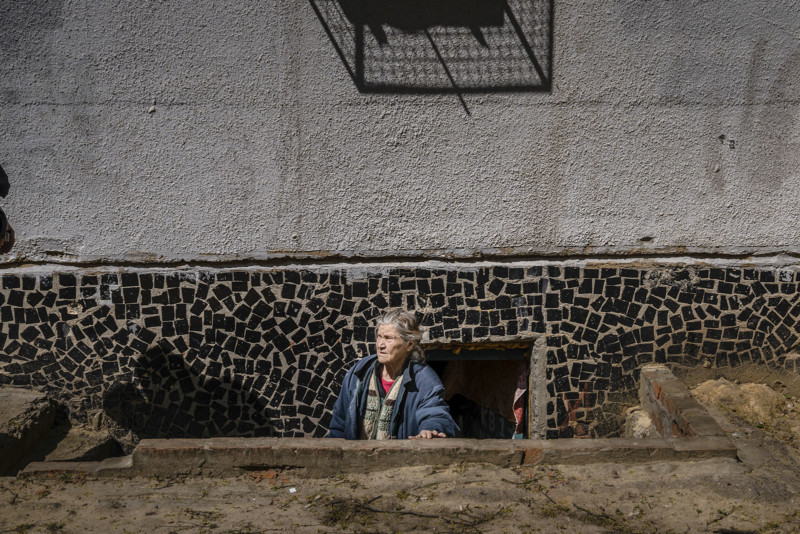
In the initial weeks of the war, nearly a dozen journalists from non-Ukrainian and Ukrainian sources were killed because they entered a fighting situation they were unfamiliar with. They did not know where the frontline was, didn’t understand the ebb and the flow of the combatants, and found themselves “directly in the middle” of the action.
Cell Phone Network and Two Phones
“Fortunately, at that time, the cell phone network in Ukraine was fully operational except for when you get to the far east where data and internet were not working very well,” says Fadek. “You could communicate by regular phone, and I would use two phones.”
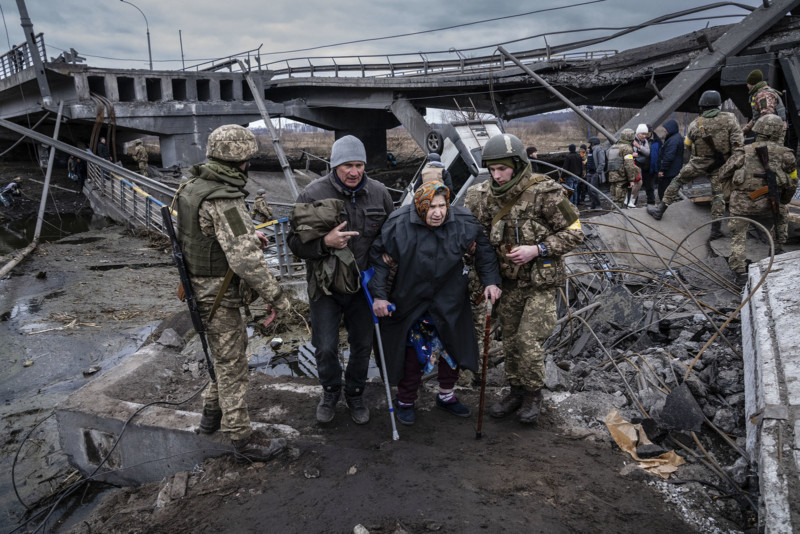
Fadek would get a local Ukrainian phone number with a local SIM for just $15/month. He would also use his American cell phone with the American number, which had a “great roaming plan using T-Mobile.”
The American phone would also hitch onto a local network to get coverage, so there was no advantage. However, locals would more likely call a local number than one in the USA. Since many phones can handle two phone numbers ringing on the same device, one could save weight by using just one phone but using two provides insurance against device failure.
GPS Tracker
“I have to say I did not have a GPS tracker, which I should have had,” admits the war photographer. “Instead, when I was working with CNN, I stayed in communication with their security team [all TV stations have their own security teams for coverage in hostile regions] who monitored my location when I was working using WhatsApp.”
“You create a group so it’ll be myself, several members of the security team, my editor, maybe several editors, and we would communicate via text like we would text each other on WhatsApp. But then there is a function that allows you to share the live location, and you have three options: 15 minutes, one hour, and eight hours. At the end of the eight-hour period, you simply refresh, and you send another link or permissions to your group members so that they can follow your location.
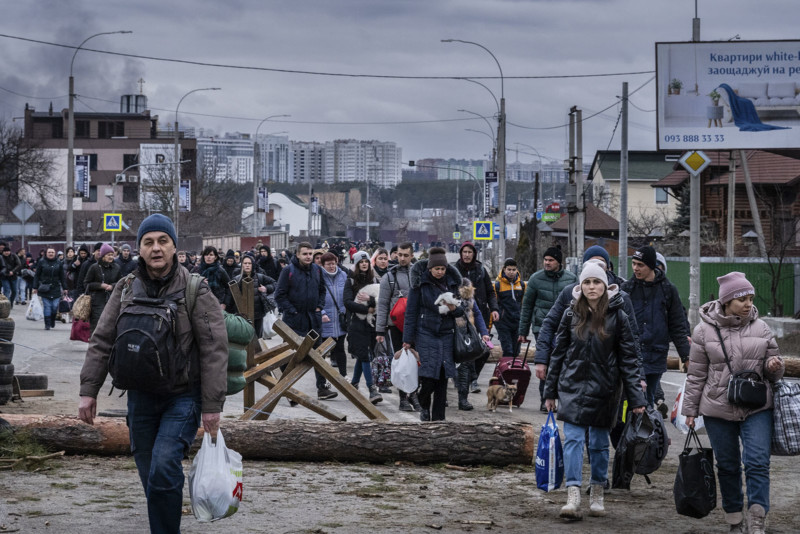
If cell phone service goes down, you need a GPS tracker, which is another expense for a freelancer.
Security Person
“Even though I was working for CNN, a television news broadcaster, I was working alone as a photographer without a security person in my car,” says Fadek. “I was working based on my own judgment and having a fixer with me.”
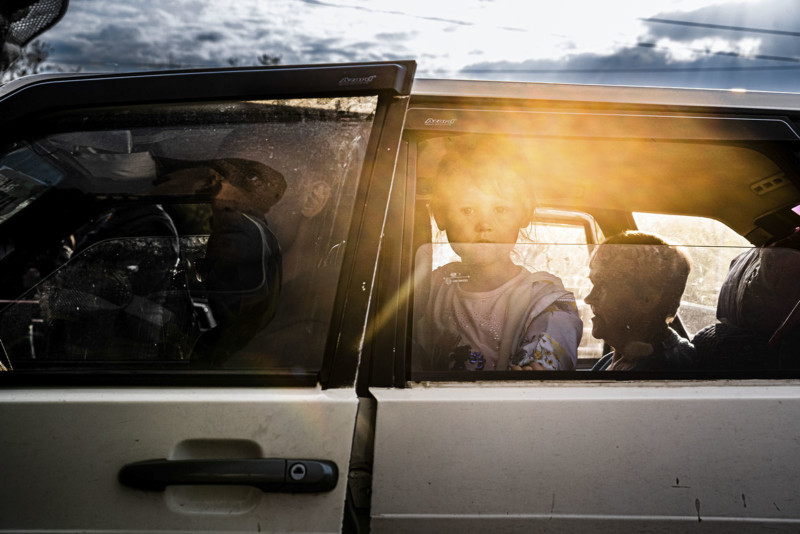
For Fadek to travel anywhere, it had to be approved in advance by the CNN security team, which had more than ten people working in Kyiv, Lviv, and cities to the east. They had to investigate whether the location was safe enough and do a risk assessment of the route he would take. Once that was approved, he was allowed to go there alone without a security person in the back seat. But the stipulation was they had to continuously monitor his movements via WhatsApp live location until he returned to the hotel at the end of the day.
Pool Resources with Other Journalists
Freelancers should share their resources with other journalists. Three or four journalists could band together to share hotel expenses, rental car, gasoline, fixer-translator, etc.
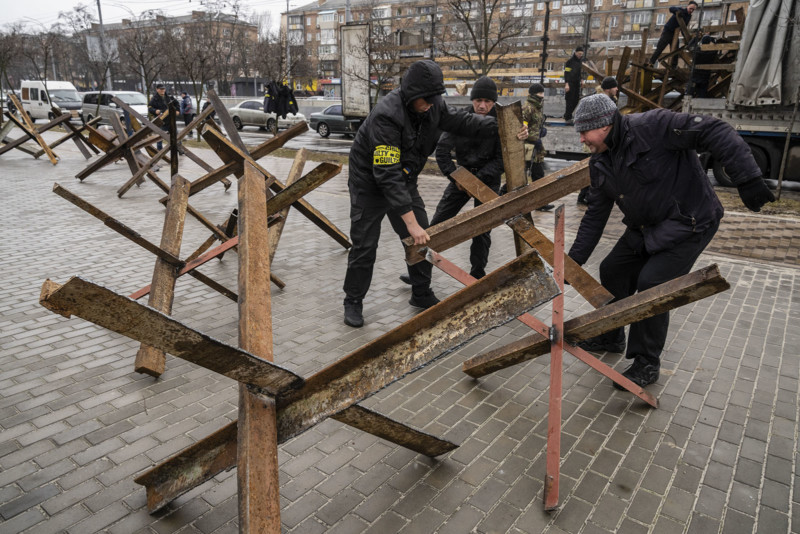
It’s challenging financially for a single freelancer who does not have an assignment to work in Ukraine. Fadek has done this in other countries when he did not have an assignment, and in Ukraine, he has seen plenty of journalists sharing.
Freelancers can also form groups on WhatsApp and monitor one another on live location or stay within line of sight where strikes are likely.
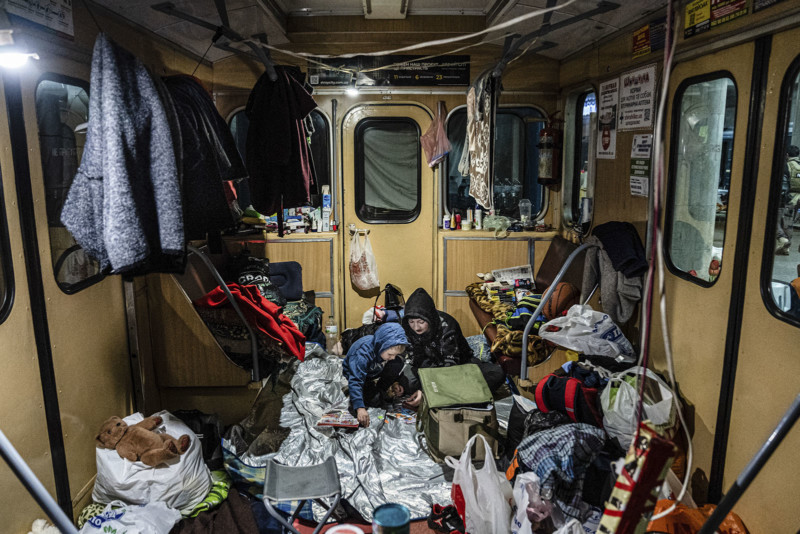
Don’t Travel Alone
You must travel with somebody and at least have a line-of-sight contact, Fadek says. It is not recommended to travel alone. You absolutely must have somebody looking over you and you doing the same for them. You can take certain risks knowing that somebody is watching your back.
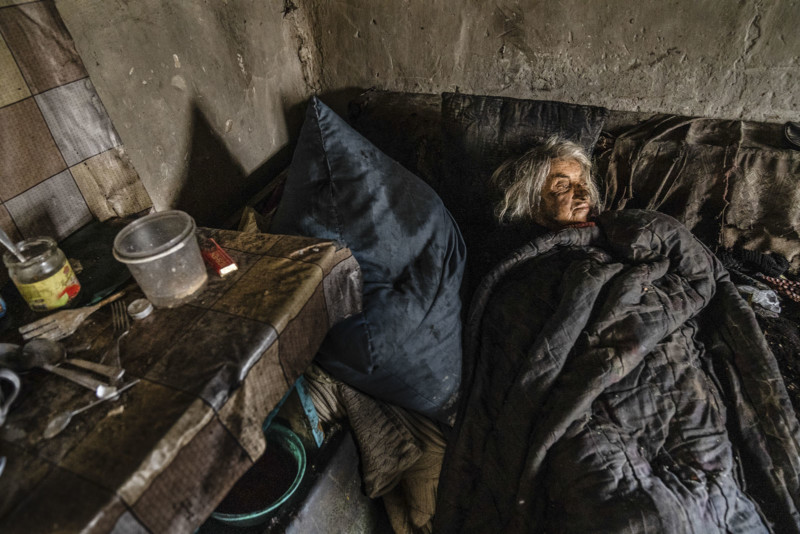
Beware the ‘Double Tap’
The Russians use a military tactic in Ukraine called the double-tap strike. A civilian or military target is hit, and then there’s a period where they wait for rescue personnel, firefighters, paramedic ambulances, journalists, and civilians to come and assess the damage. Half an hour to an hour later, that exact location is hit again by artillery or mortar to kill the second round of people. Russia has also used this technique in Syria, Afghanistan in the 80s and the 90s, and Chechnya.
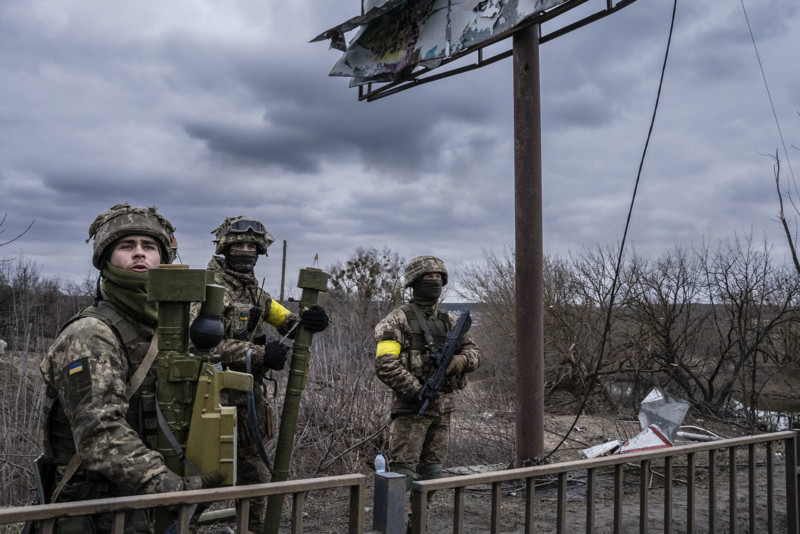
Getting Rabies from Stray Dogs
Watch out for stray dogs that their owners have left behind.
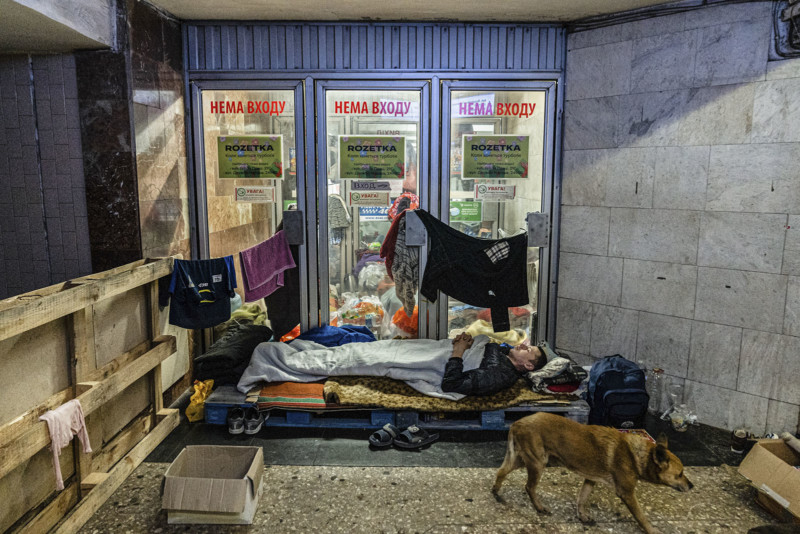
“I myself was bitten by a dog,” recounts Fadek. “Fortunately, I was traveling with people who were able to take me to see a doctor.”
The rabies vaccine is usually given on the day of the rabies exposure, and then a dose of the vaccine is given again on days 3, 7, and 14. Rabies is a viral infection that tends always to be fatal once it takes hold of your central nervous system.
“Rabid dogs are commonly found in Ukraine,” writes the CDC website.
Get Vaccinated
In addition to being up to date with COVID vaccinations, journalists should make sure they have all other necessary shots to avoid contracting diseases on the field. Full details for other vaccinations you should get can be found on the CDC page for Ukraine.
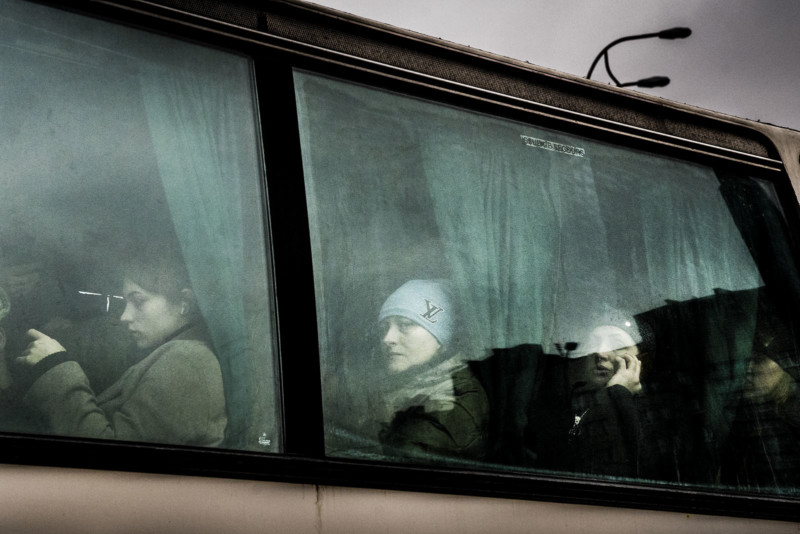
COVID Tests
You should definitely carry COVID home tests with you, Fadek says.
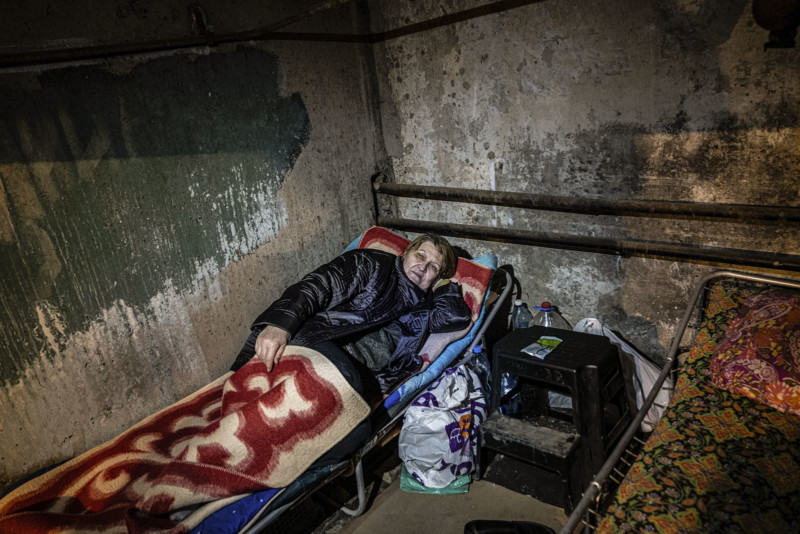
“I actually did get COVID in March,” says Fadek. “I left. I went to Poland. Well, I was already in Ukraine for a continuous seven-week stretch, so I was already nearing the end of my physical limitations of working effectively. Getting COVID was like the signal that it was time to take a break.
“Although I tested positive for COVID, I wasn’t feeling that bad. I had a few days when I was a little sick, but since I’m fully vaccinated and double boosted, the effect was minimal. I had my own car and drove myself, dropped off the car in Lviv, walked across the border, and then took a taxi to Warsaw, Poland.
“I hung out in my hotel for a couple of days until I could test negative, and then I hopped on a plane back home to New York.
Carry a Medical Kit
Fadek carried a medical kit in a pouch on his waist.
“Here are the top five things in my kit,” says the photojournalist. “I have blunt scissors, gauze, tape, four tourniquets. I have expandable tape and plastic material that you peel off if you have an abdomen wound. It is a rectangle of 4×5 inches that covers the wound and fits over a large area of the abdomen if you cannot stop the bleeding.
“Of course, some band-aids for minor things. Anti-septic and plenty of alcohol gel [to disinfect wounds].”
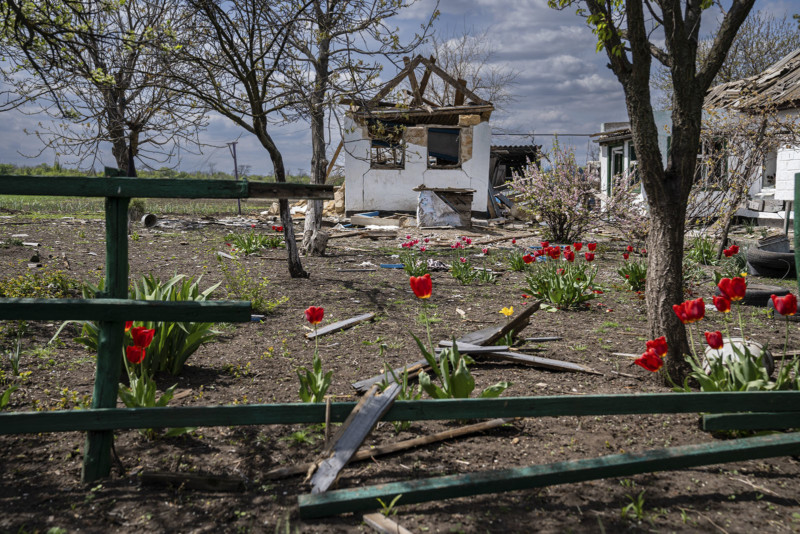
Medicines
“I’m a true believer in carrying Cipro, ciprofloxacin. It’s an all-purpose antibiotic that kills all nasty bacteria but is especially useful for food poisoning,” says Fadek.
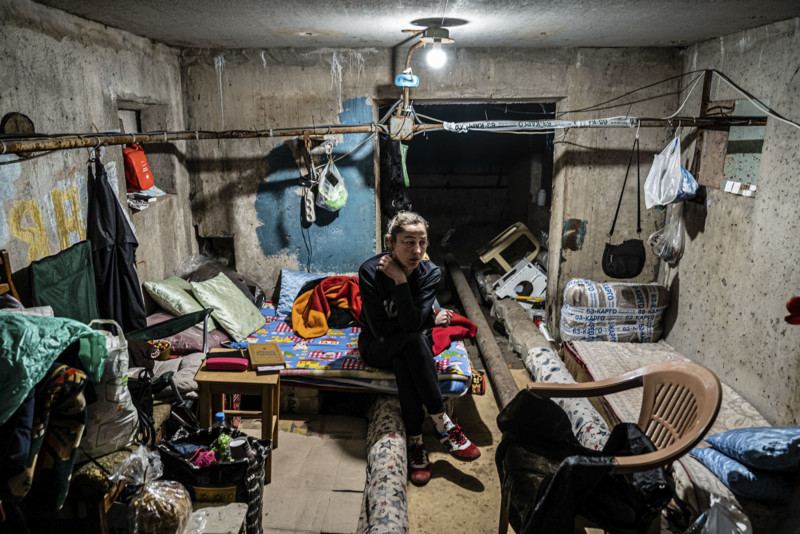
“When you’re in a country where electricity might turn off, or the cleanliness of the water is suspect, it’s very easy to be poisoned … from dirty water, fruits and vegetables washed in dirty water, and meat or poultry or fish that has not been refrigerated properly. Getting sick is very, very easy. Every journalist I know carries Cipro, a very common prophylaxis drug.”
Pain and fever medicine, Tylenol, or Advil is also recommended.
Learn to use a Tourniquet
“When I did a medical training course in London several years ago, I learned that the lower parts of your body, namely your legs especially, have a much higher blood pressure than your arms or hands,” explains the photo warrior. To staunch the bleeding from an arterial sever or cut, you need to close a tourniquet tight enough to stop the bleeding. And you may need more than one.”
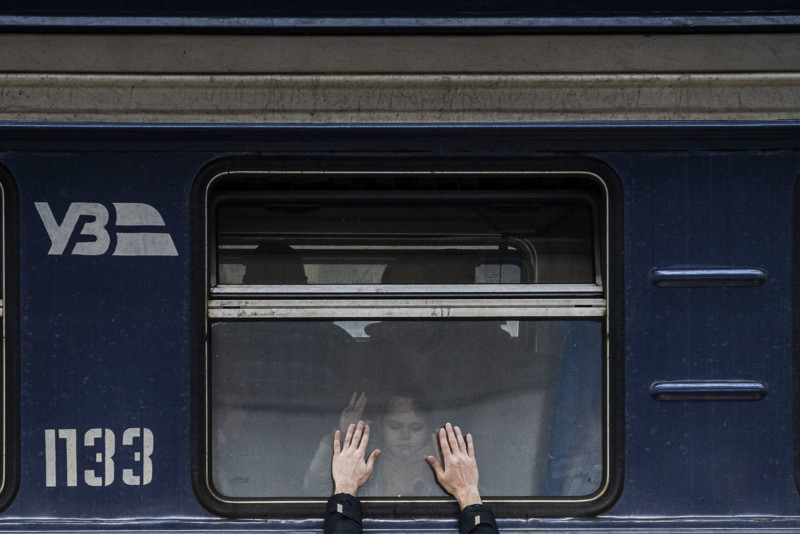
Fadek kept four tourniquets, two on him and two in the car, as people with him might also need one. He has learned from soldiers to keep one in each pocket, so it is literally at your fingertips. In the case of an artery wound, consciousness may be lost in two minutes, so it is necessary to have the ability to put it on quickly.
A “T” should be marked on the forehead with a Sharpie or coal, so medical personnel will immediately know that there is a tourniquet on the body. Tissue loss starts to set in by 4 to 5 hours or before as the tourniquet cuts off all blood supply to the foot. So, it is a matter of paramount importance to get the person medical attention as quickly as possible.
Drinking Water
“You can believe it or not, but in Ukraine, you can find food and water everywhere,” says Fadek. “I must add, though, that I would never decide to remain in a city like Mariupol where everything breaks down.
“If I did find myself in a situation where everything was shut down, I might have to resort to boiling the water because I do not carry iodine pills. But I’ve never encountered that problem. I’ve always had access to bottled water.”
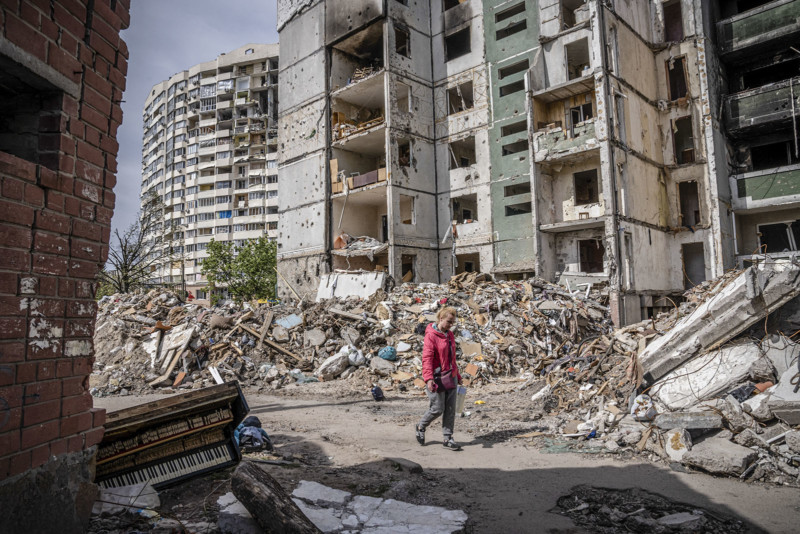
Point Cars Toward Roads
Your car should always be facing the road and ready for a quick getaway.
“It’s happened to me a few times in Ukraine where the shelling is not exactly nearby, but it’s close enough that it’s time to leave,” says the photographer. “Just the simple act of having your car facing the road, and it just makes it so much easier to jump in the car, put the key in the ignition and go forward.”
The confusion happens when you must sort of back out and just turn around, and then you have people in the car yelling at you because everyone’s nervous as they want to get out.
Fadek learned this tactic from experienced journalists when he was starting. Also, you must park so that you do not get boxed in by other journalists who arrive after you.
Rental Cars
In Lviv, an hour and a half from the Polish border, rental cars were available. They started stipulating that you do not go within 10 miles of the front line, but a lot of journalists have ignored those rules.

“If you were in Kharkiv or in Kramatorsk or any of these places in the east [you would be less than 10 miles from the frontline] because Russian artillery is landing in the center of these cities,” says Fadek. “As civil society breaks down and you have difficulty obtaining food and water, not impossible but difficult, just like you have difficulty obtaining gas.”
In Ukraine, gasoline was being rationed, and only two segments of the population were getting priority access — the military and members of gasoline chains WOG and OKKO (Ukrainian gasoline companies).
In the case of Fadek returning to Ukraine, he would not drive his car but would hire a driver and let him worry about obtaining fuel.
Hotels
Most hotels were shutting down and evacuating their staff. However, it was still possible to reserve on booking sites like Expedia and get a room. There were also guest houses and Airbnb rentals.
Fadek recommends making a phone call to confirm your reservation before arriving.
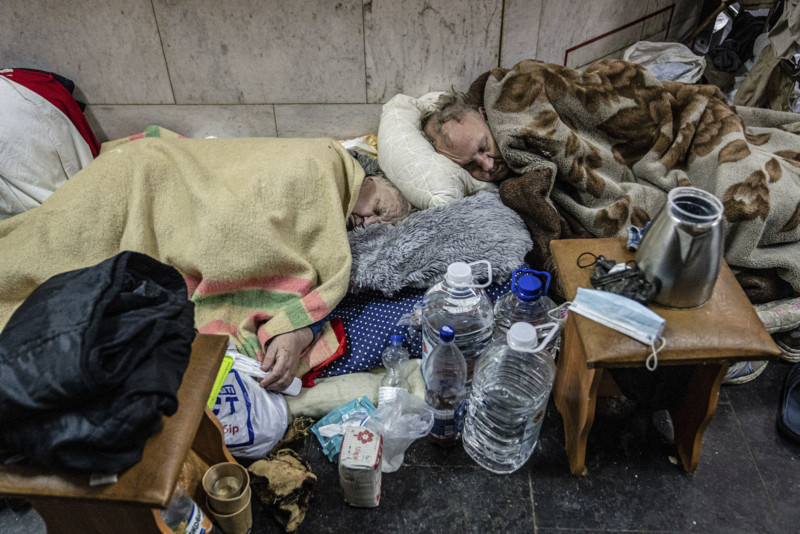
Photograph by Timothy Fadek
“If you’re on the front lines with the soldiers, it’s extremely risky to spend an overnight in a trench with them,” says the photographer. “It’s completely doable, but the Ukrainian government has certain limitations on what the press can see and how far they can go.
“You generally stay in the safety of your hotel far behind frontline areas, and then you make daily trips closer to where things are happening.”
You could drive 10 to 20 miles or more from your hotel to do your photography as you preferably do not want to be sleeping within artillery range. Russian artillery can reach up to 20 to 25 miles.
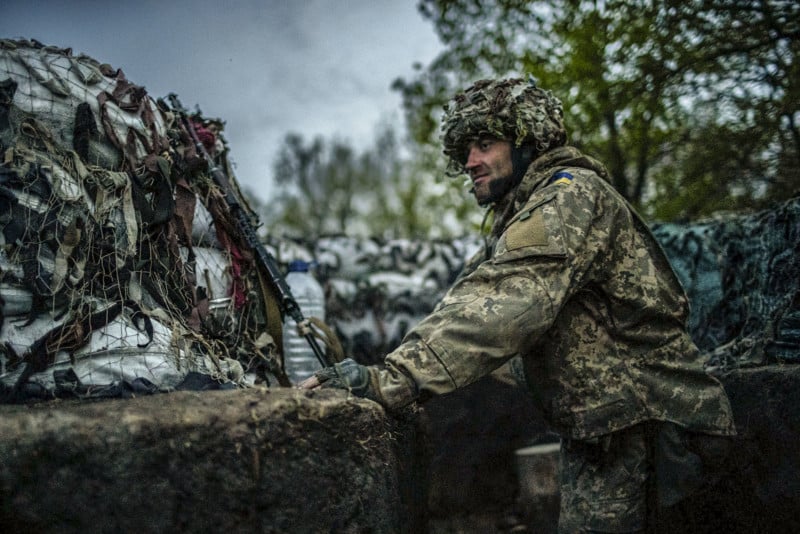
One can easily cover aspects of the war that are nowhere near the front line. You might want to, as a photojournalist, cover internally displaced people leaving the country or activity at the train and bus stations, but journalists have been killed covering these things as well, so there is really no guaranteed safety.
Thus, when working in a conflict zone, it is always important to be well prepared and equipped before and during assignments in order to give yourself a better chance of staying healthy and safe.
You can see more of Timothy Fadek’s work on his website and Instagram.
About the author: Phil Mistry is a photographer and teacher based in Atlanta, GA. He started one of the first digital camera classes in New York City at The International Center of Photography in the 90s. He was the director and teacher for Sony/Popular Photography magazine’s Digital Days Workshops. You can reach him here.
Image credits: All photos by Timothy Fadek. Header photo: May 11, 2022. Kyiv, Ukraine. Members of the Georgian Foreign Legion, an international group of volunteer fighters with previous combat experience who came to Ukraine to join the war against invading Russian forces. Photograph by Timothy Fadek